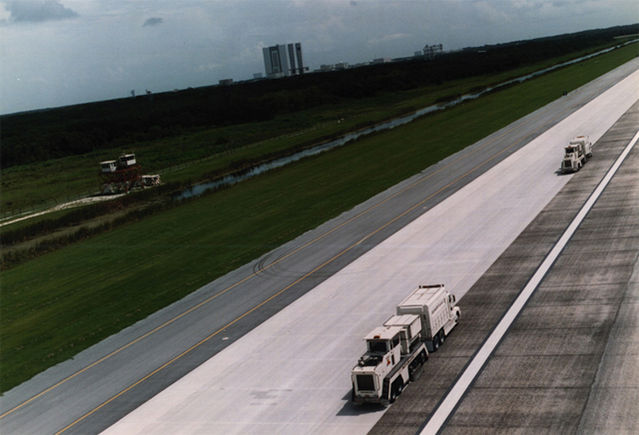AIRPORTS
Constant tire scuffing and rubber removal tend to polish runway surfaces. Major airports in the United States and Canada specify the Skidabrader™ exclusively to bring their runway texture back into FAA compliance. These runway surfaces are abraded bidirectionally. The Skidabrader™ promotes surface drainage that allows tires to contact new aggregate points on the existing pavement. The new surface allows water to escape in every direction, improving friction results.
This Skidabrader™ modification creates excellent friction numbers while reducing tire wear and rubber build-up, allowing longer intervals between rubber removals. Some airports report this modification done periodically, paying for itself in reduced rubber removal requirements.

This Skidabrader™ modification creates excellent friction numbers while reducing tire wear and rubber build-up, allowing longer intervals between rubber removals. Some airports report this modification done periodically, paying for itself in reduced rubber removal requirements.
1994 NASA needed a surface modification for its Shuttle Landing Runway in Florida. Engineers conducted months of extensive tests with competing methods claiming to reduce tire wear. The goal was a surface modification that would allow the $2 billion shuttle to land safely in a 20-knot crosswind, which had previously been too dangerous.
Dozens of military and significant international airports use our services to complement the rubber removal process and maintain required friction readings. Skidabrader™ can provide both the abrading and ultra-high-pressure water processes as part of a maintenance contract, ensuring the safest possible runway conditions.
We also provide certified runway skid and stripe reflectivity testing using the industry's latest equipment and methods.
-
TEXTURING-FRICTION RESTORATION
-
RUBBER REMOVAL
-
STRIPE APPLICATION AND REMOVAL
-
GATE AND RAMP CLEANING
-
TERMINAL POLISHING
-
PRE AND POST FRICTION TESTING
-
REFLECTOMETER TESTING
-
WATER DRAINAGE TESTING
-
FOD CONTROL
FRICTION LEVEL CLASSIFICATION
FOR RUNWAY PAVEMENT SURFACES















